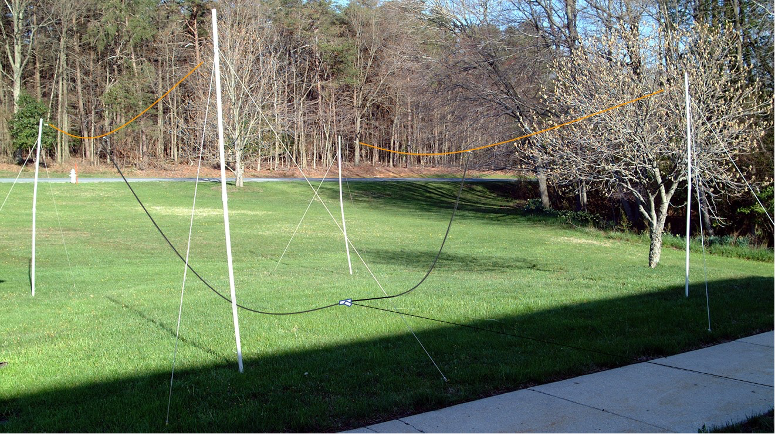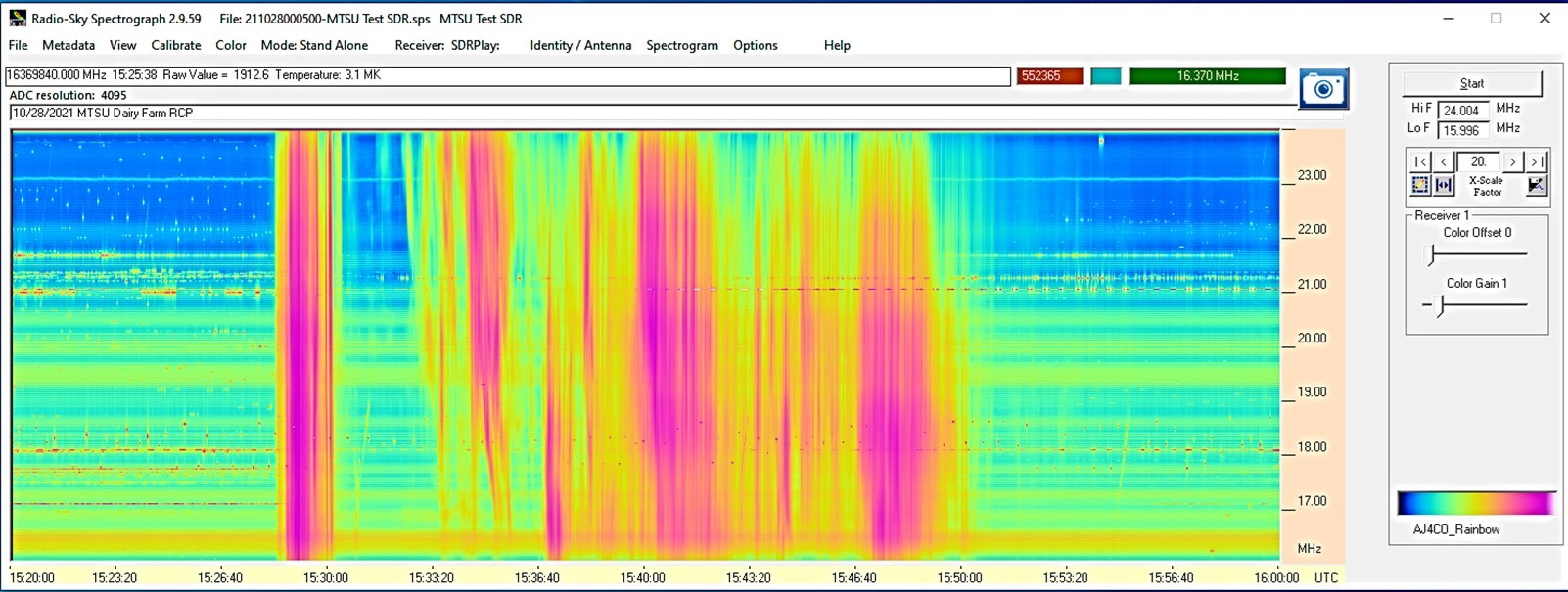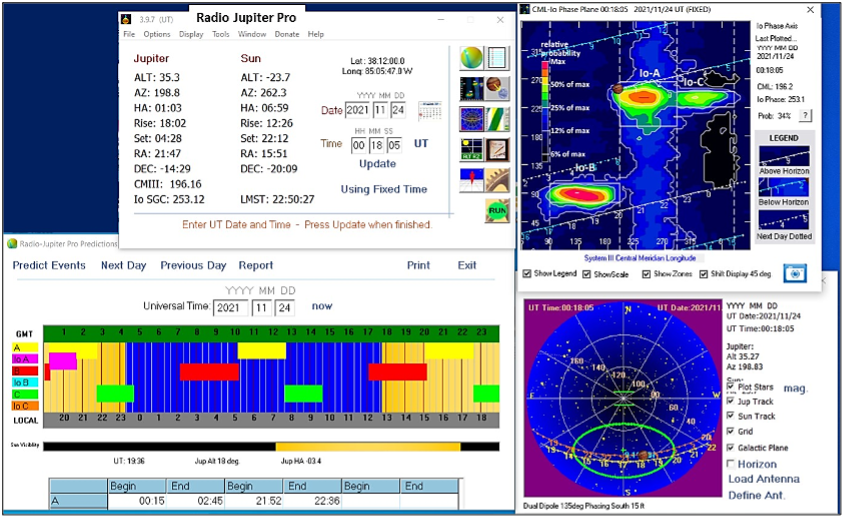RJ 2.0 Radio Telescope – Overview
Hardware
Receiver
The Radio JOVE Project has partnered with SDRplay (www.sdrplay.com), a UK-based company that manufactures Software Defined Radio (SDR) radios, to use their model RSP1A as a radio telescope receiver. The model RSP1A is a full-featured, 14-bit wideband SDR radio used for all-round general coverage communications and includes SDRuno software. The RSP1A covers the radio spectrum from 1kHz (VLF) to 2GHz (Microwaves) with up to a 10 MHz visible bandwidth. With an appropriate antenna, Radio JOVE uses the RSP1A for high frequency (HF) radio astronomy with a nominal setup with a frequency range of 16 – 24 MHz. This frequency range is ideal for Jupiter decameter radio observations, as well as a good range for solar, Galactic, and terrestrial radio emissions.

Dual dipole antenna kit
The antenna kit contains the necessary wire, insulators, power combiner, ferrites, coaxial cable and connectors for a basic dual dipole array. Locally available components such as PVC masts, rope and some hardware are not provided in the kit.
The antenna array requires a reasonably flat area 30 ft N-S by 45 ft. E-W. The soil should be suitable for putting stakes into the ground. Since the antenna is sensitive to electrical noise it is best not to set it up near power lines or close to buildings. For safety reasons, keep the antenna away from power lines during construction and operation. The best location may be a sports field or a rural setting.


Software
The Radio JOVE radio telescope includes Radio-Sky Spectrograph (RSS), a program that displays spectrograph radio data, the intensity of the radio data as frequency vs. time display. This software is freely available here: "Radio-Sky Publishing. In addition, Radio-Sky Publishing provides freeware software (Radio Jupiter Pro) for predicting when Jovian radio noise storms are likely to occur. Radio-Sky Spectrograph also allows an observer to stream signal data over the internet and view spectrograph data in real time from remote observers. Radio JOVE software is designed for use on a Windows platform of modest capability. Note that the software will not work on a Mac computer.


Documentation
The Radio JOVE 2.0 radio telescope kit comes with good documentation. The receiver and antenna manuals are designed to guide the participant to completely setup and operate their radio spectrograph telescope. In addition, the antenna manual is designed to teach some fundamentals of antenna theory. These manuals are available online:
The book Listening to Jupiter, 2nd Ed. by R. S. Flagg is available separately on the order page and is a highly recommended reference for learning the basics of Jupiter radio astronomy, the electromagnetic radio spectrum, and the original Radio JOVE hardware and software. You will also get a good overview of low frequency solar radio astronomy, and the fundamentals of radio receivers, antennas, calibrators, and advanced measurements and projects.

Calibrator
A low-cost calibrator is currently not available. However, the Radio JOVE team is currently working on an inexpensive calibrator to be made available in the future. For serious observers, Radio JOVE has a loaner calibrator that can be used for two weeks to calibrate your receiver. Contact the Radio JOVE team if you wish to take advantage of this option.
Alternative Receivers and Antennas
Radio JOVE provides the settings to optimize the SDRplay RSP1A for short wave radio astronomy; however, other receivers can be used successfully for radio astronomy.
Many ham radio operators and short wave listeners have sensitive receivers and excellent antennas that are suitable for hearing Jovian and Solar radio emissions. One important receiver feature is the ability to turn off the automatic gain control (AGC) circuit.
Jupiter signals are best received in the 18-22 MHz frequency range. General coverage receivers can be used in AM or SSB modes and if you are using a ham band antenna then the 15 meter band is preferred. The AGC, noise blanker (NB) and noise reduction (NR) should be turned off to avoid alteration of the incoming signal.
Many other SDR radios may also be used, but we cannot guarantee they will be compatible with the Radio Spectrograph Software. You are encouraged to try other radios; we would like to hear from you about your experiences.
Ham band antennas such as a Yagi, Quad, Moxon, or even a single dipole can work, although the receive gain of a single dipole is a bit low for all but the strongest Jupiter storms.
